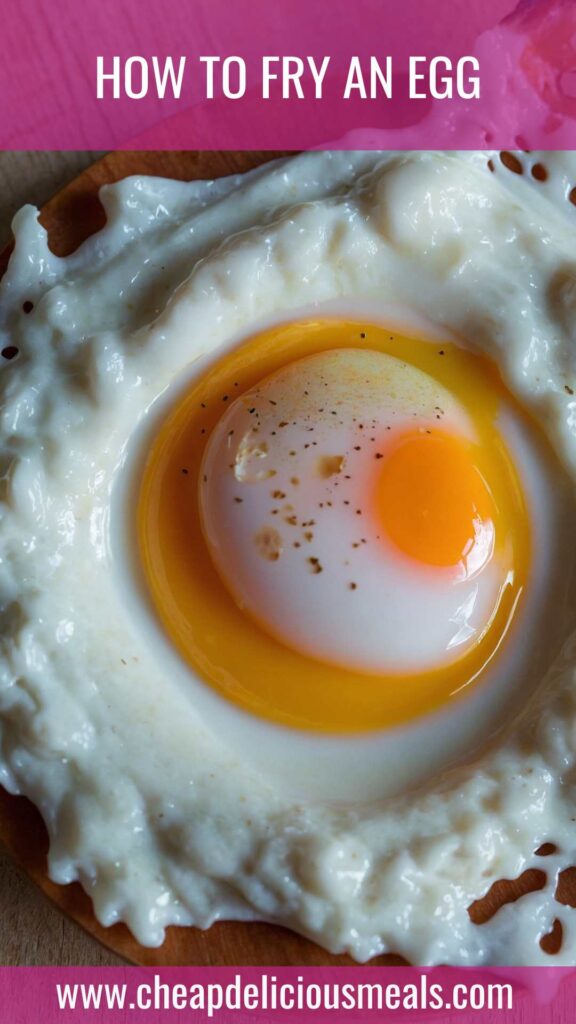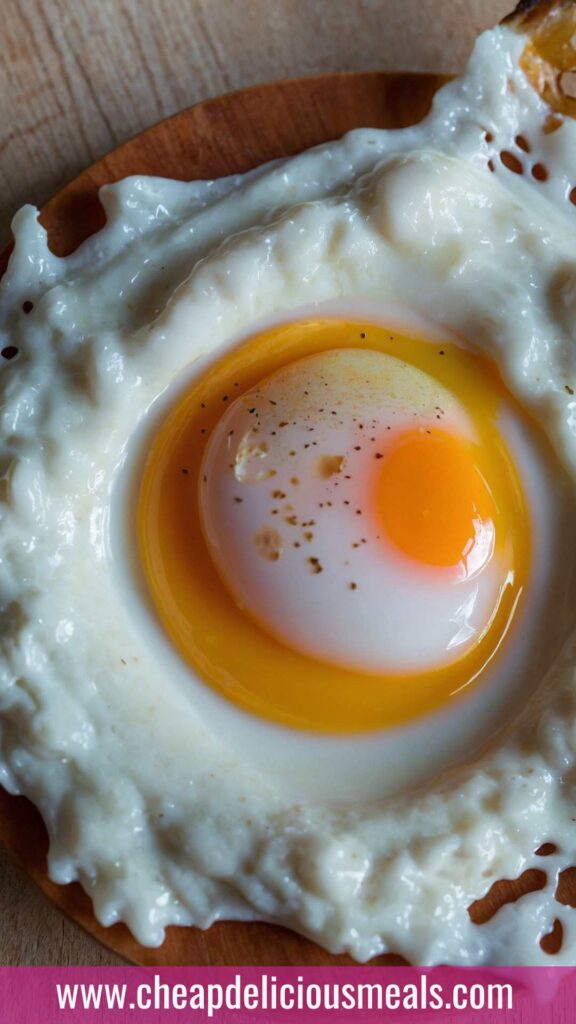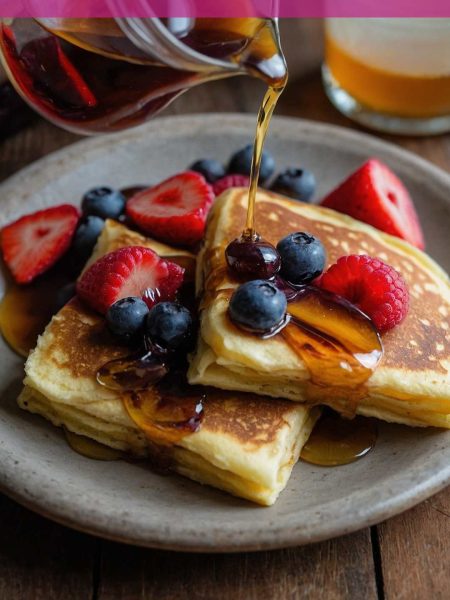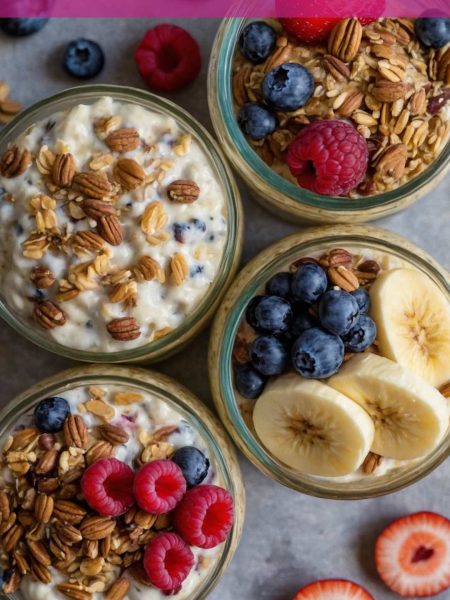When it comes to cooking, few things are as satisfying as mastering a simple but essential dish. Enter the fried egg. It’s a staple across cuisines, appearing in breakfasts, brunches, and even dinner plates. While you might be thinking that frying an egg is simple, let me tell you, there’s a world of difference between a mediocre egg and a perfectly fried one. How might you enjoy your fried egg, you ask?
Pair it with artisan toast, sprinkle it over a bed of sautéed greens, or layer it atop a vibrant grain bowl. The possibilities are endless, which is why I’m excited to take you on this journey of culinary mastery.

I remember the first time I attempted to fry an egg. I had all the confidence of a seasoned chef and, surprisingly, all the skills of an amateur. My brother, who had mastered the art, watched me curiously. “It’s all in the wrist,” he said with a grin, as I cautiously flipped my first egg, resulting in a sad, broken yolk.
However, frying an egg is more than just flipping; it’s a dance between technique and timing, and it can elevate any meal. Today, we will delve into the nuances of frying an egg, tips for making it perfect, and ways to incorporate it into your meals.
You Might Also Like These Recipes!
What is Frying an Egg?
Frying an egg is a cooking method where an egg is cracked into hot oil or fat in a frying pan. It’s cooked until it reaches the desired doneness — think sunny-side-up, over-easy, over-medium, or hard eggs. Each style offers its own unique texture and flavor experience.
But it’s not just about heat. The temperature, type of fat, and even the freshness of the egg can all influence the final product.
What is the Flavor Profile of a Fried Egg?
The flavor of a fried egg is distinct yet versatile. The yolk is rich and creamy, while the white can develop a tender texture with crispy edges, depending on the frying technique. When seasoned simply with salt and pepper, the taste is both comforting and delicious.
Add fresh herbs, hot sauce, or a sprinkle of cheese, and the complexity of flavors can increase significantly. It’s this simplicity yet potential for enhancement that makes the fried egg a beloved choice worldwide.
What Makes This Recipe Different From Other Methods of Frying an Egg?
This specific method I will outline today emphasizes a balance of heat and timing. Many people focus solely on the egg itself, neglecting the fat or pan type. I ensure that our cooking fat is not just any oil but one that complements the egg’s richness.
Additionally, using freshly cracked farm eggs makes a notable difference. In a world where every minor detail matters, it’s the small choices that turn an ordinary fried egg into an extraordinary one.
Ingredients You’ll Need
Here’s what you’ll need to whip up a delicious fried egg:
- 1 large farm-fresh egg: Freshness matters; farm-fresh eggs tend to have more flavor and more vibrant yolks.
- 1 tablespoon olive oil, butter, or any preferred cooking fat: Choose a fat that you enjoy the flavor of, as it will significantly affect the final dish.
- 1/4 teaspoon garlic powder: This adds subtle flavor without overpowering the egg.
- Salt, adjusted to taste: Essential for enhancing flavor.
- Freshly ground black pepper, to taste: A touch of spice to balance the richness.
- 1 tablespoon finely chopped chives or green onions: This gives a fresh note and lovely color.
Step by Step Directions
Step 1: Gather Your Equipment
First, gather your gear. You’ll need a non-stick frying pan, a spatula, and a small bowl for the egg. Having everything ready ensures a smoother cooking process.
Step 2: Heat the Pan
Place your frying pan over medium heat and allow it to warm up for about two minutes. If you have a heat-resistant thermometer, aim for around 300°F (150°C). The pan should be hot enough for the egg to sizzle upon contact, but not so hot that it burns.
Step 3: Add the Fat
Add your chosen fat to the skillet. I prefer olive oil for its health benefits and flavor. Swirl the oil or melt the butter to coat the pan evenly. This ensures that the egg doesn’t stick and gets that beautiful golden edge.
Step 4: Crack the Egg
Crack the egg into a small bowl. This step is crucial for preventing shell fragments from joining your dish. Then, gently slide the egg from the bowl into the hot pan. Hear that sizzle? That’s a good sound!
Step 5: Season the Egg
As the egg begins to cook, sprinkle a dash of salt, garlic powder, and a bit of black pepper over the top. The seasonings add depth without overwhelming the delicate flavor of the egg.
Step 6: Control the Cooking Time
Watch the cooking closely. For sunny-side-up, let the egg sit untouched for about three minutes. If you prefer over-easy, gently flip the egg after a couple of minutes and cook for an additional minute. If you like a firmer yolk, simply give it an extra minute or two based on your preference.
Step 7: Serve
Once your egg has reached your desired doneness, carefully transfer it to a plate. Garnish with freshly chopped chives or green onions. And just like that, you have a perfectly fried egg!

Tips On Making the Best Fried Egg
- Use a Non-Stick Pan: This is crucial for preventing sticking. A well-seasoned cast-iron skillet can work wonders too.
- Fresh Eggs Only: Older eggs may spread too much and not give you the nice shape you want.
- Temperature Control: Keep an eye on the heat. Too high can lead to crispy edges and not enough cooking for the whites.
- Experiment with Fats: Each type of fat adds a different flavor. Try butter for richness, olive oil for a fruity touch, or even bacon grease for a heartier dish.
- Cover the Pan: For a softer top and faster cooking, cover the pan with a lid during the last minute of cooking. This method traps steam, helping the whites set without burning the bottom.
Nutrition Information
One large fried egg contains approximately:
- Calories: 90
- Protein: 6g
- Fat: 7g
- Carbohydrates: 1g
- Cholesterol: 210mg
In terms of health, eggs are a great source of protein and packed with essential vitamins and minerals, including vitamins B12 and D, riboflavin, and selenium.

How Can I Store This Fried Egg?
While fried eggs are best enjoyed fresh, if you happen to have leftovers, you can store them in an airtight container in the fridge for up to two days. To reheat, place the egg in a skillet over low heat or microwave for a few seconds until warmed through.
If the Items Are Not Available in Your Kitchen, What Are Some Substitute Options for the Ingredients?
- Eggs: Egg Whites – You can use just the whites if you’re concerned about cholesterol. Either buy carton versions or separate fresh eggs.
- Cooking Fat: Coconut Oil – This is a great alternative, offering rich flavor and health benefits, though it does impart a subtle coconut flavor.
- Garlic Powder: Fresh Garlic – Mince a small clove of fresh garlic and sauté it in the fat before adding the egg for fresh flavor.
- Chives/Green Onions: Parsley or Cilantro – If you don’t have these herbs, fresh parsley or cilantro will work well for a different fresh note.
Conclusion
Frying an egg is a fundamental kitchen skill that opens doors to culinary creativity. Once you grasp this art, you can impress guests with a simple breakfast or add sophistication to a dinner plate.
The elegance of a well-fried egg lies in its simplicity. Each element, from the fat to the seasoning, can alter its character and create a unique dish. So, gather your ingredients, roll up your sleeves, and get frying. You’ll master the egg in no time and bring a taste of perfection to your kitchen. Happy cooking!
You Might Also Like These Latest Recipes!
- Air Fryer Chicken Drumsticks Recipe
- Easy Cilantro Lime Chicken Recipe
- Roasted Delicata Squash Recipe

How To Fry an Egg – Cheap Delicious Meals
Description
I remember the first time I attempted to fry an egg. I had all the confidence of a seasoned chef and, surprisingly, all the skills of an amateur. My brother, who had mastered the art, watched me curiously. “It’s all in the wrist,” he said with a grin, as I cautiously flipped my first egg, resulting in a sad, broken yolk.
However, frying an egg is more than just flipping; it’s a dance between technique and timing, and it can elevate any meal. Today, we will delve into the nuances of frying an egg, tips for making it perfect, and ways to incorporate it into your meals.
Ingredients
Here’s what you’ll need to whip up a delicious fried egg:
Instructions
Step 1: Gather Your Equipment
-
First, gather your gear. You'll need a non-stick frying pan, a spatula, and a small bowl for the egg. Having everything ready ensures a smoother cooking process.
Step 2: Heat the Pan
-
Place your frying pan over medium heat and allow it to warm up for about two minutes. If you have a heat-resistant thermometer, aim for around 300°F (150°C). The pan should be hot enough for the egg to sizzle upon contact, but not so hot that it burns.
Step 3: Add the Fat
-
Add your chosen fat to the skillet. I prefer olive oil for its health benefits and flavor. Swirl the oil or melt the butter to coat the pan evenly. This ensures that the egg doesn't stick and gets that beautiful golden edge.
Step 4: Crack the Egg
-
Crack the egg into a small bowl. This step is crucial for preventing shell fragments from joining your dish. Then, gently slide the egg from the bowl into the hot pan. Hear that sizzle? That’s a good sound!
Step 5: Season the Egg
-
As the egg begins to cook, sprinkle a dash of salt, garlic powder, and a bit of black pepper over the top. The seasonings add depth without overwhelming the delicate flavor of the egg.
Step 6: Control the Cooking Time
-
Watch the cooking closely. For sunny-side-up, let the egg sit untouched for about three minutes. If you prefer over-easy, gently flip the egg after a couple of minutes and cook for an additional minute. If you like a firmer yolk, simply give it an extra minute or two based on your preference.
Step 7: Serve
-
Once your egg has reached your desired doneness, carefully transfer it to a plate. Garnish with freshly chopped chives or green onions. And just like that, you have a perfectly fried egg!
Nutrition Facts
Servings 1
- Amount Per Serving
- Calories 90kcal
- % Daily Value *
- Total Fat 7g11%
- Cholesterol 210mg70%
- Total Carbohydrate 1g1%
- Protein 6g12%
* Percent Daily Values are based on a 2,000 calorie diet. Your daily value may be higher or lower depending on your calorie needs.
Note
- Use a Non-Stick Pan: This is crucial for preventing sticking. A well-seasoned cast-iron skillet can work wonders too.
- Fresh Eggs Only: Older eggs may spread too much and not give you the nice shape you want.
- Temperature Control: Keep an eye on the heat. Too high can lead to crispy edges and not enough cooking for the whites.
- Experiment with Fats: Each type of fat adds a different flavor. Try butter for richness, olive oil for a fruity touch, or even bacon grease for a heartier dish.
- Cover the Pan: For a softer top and faster cooking, cover the pan with a lid during the last minute of cooking. This method traps steam, helping the whites set without burning the bottom.





